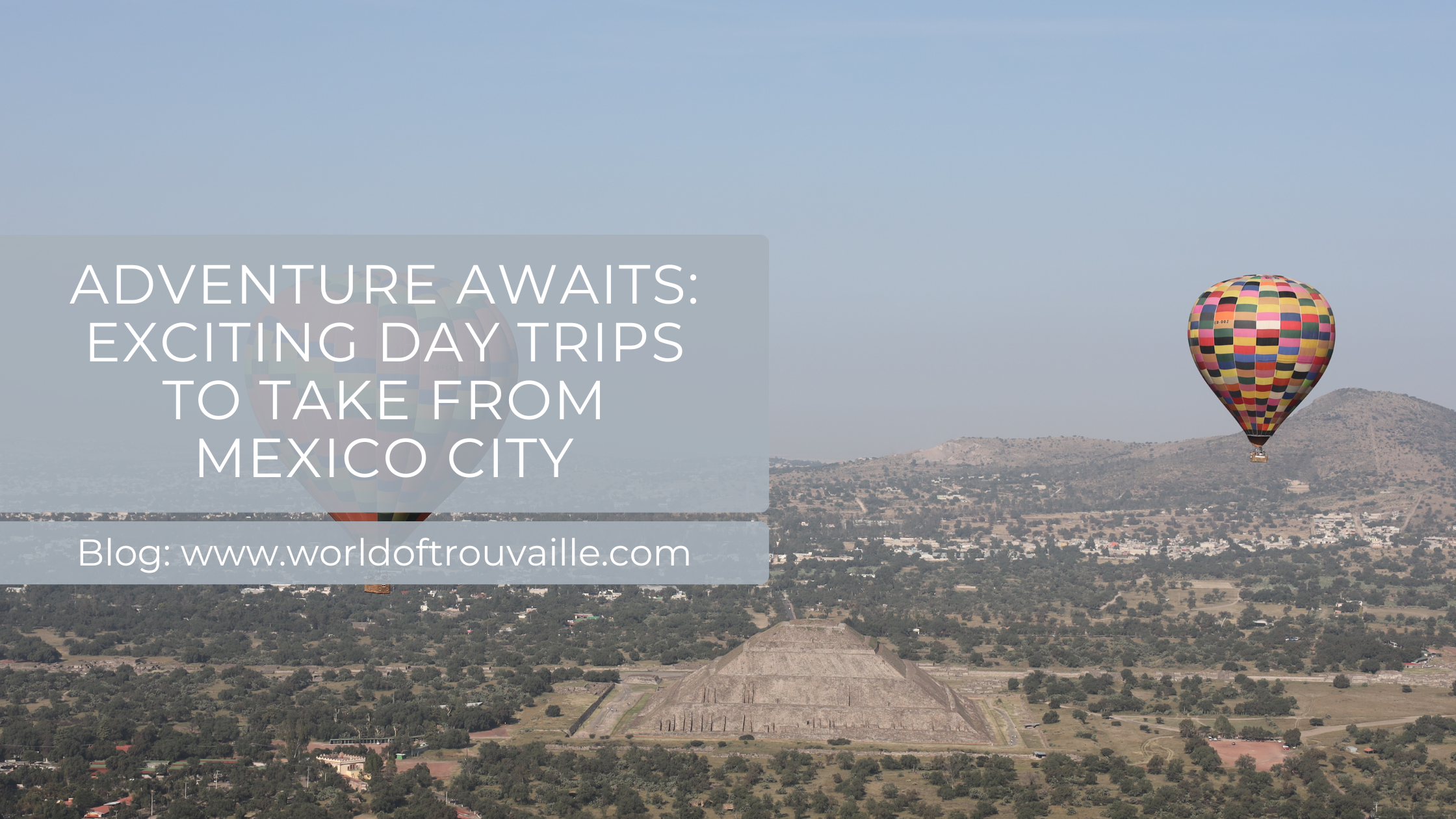
Adventure Awaits: Exciting Day Trips to Take from Mexico City
Mexico City, the capital of Mexico, is a bustling metropolis with countless attractions and things to do. However, it’s also surrounded by breathtaking natural landscapes, ancient ruins, and charming colonial towns, all within a few hours’ drive. That’s why taking a day trip from MXC is an excellent way to explore the region’s rich history, culture, and natural beauty without having to sacrifice too much time.
Some of the most popular day trips from MXC include visiting the ancient city of Teotihuacan, exploring the canals of Xochimilco, hiking the volcanoes of Popocatépetl and Itzaccihuatl, and discovering the colonial city of Puebla. Whatever your interests are, there’s a day trip from MXC that will surely leave you with unforgettable memories.
If you have more time available to explore Mexico City and the surrounding countryside, you should add following stops to your itinerary:
TABLE OF CONTENT
- Day trip to Teotihuacán
- Day Trip To Xochimilco
- Daytrip to the Volcanoes of Itzaccihuatl and Popocatépetl
What to see in Teotihuacán
Teotihuacan was a city of great importance in ancient Mesoamerica, but the ethnic identity of its founders remains a mystery. The city was founded around the first century BCE and reached its peak in the first half of the first millennium CE, when it was one of the largest cities in the world, with a population estimated at over 100,000 people. The indigenous groups that inhabited Teotihuacan are still unknown, but it is believed that they were a mix of different ethnicities and cultures.
Today, visiting Teotihuacán is an absolute must-do and must-see when in Mexico City.
The Pyramid of the Moon
The Pyramid of the Moon was built around 100 C.E. and went through seven stages of construction, with three of them being dedicated to gruesome sacrifices.
The Pyramid is believed to have been used as a ritual temple built to worship the Great Goddess of Teotihuacan who served as a deity of water, fertility, and creation.
Archeological excavations have revealed that the Pyramid of the Moon was used for sacrificial burial, and many artifacts like mosaic figurines. Green jade artifacts, obsidian daggers, and cutting tools meant for ritual sacrifice have been found there.
The discoveries of tunnels under the Pyramid have provided archeologists with insight into the ancient Teotihuacan’s different functions of the pyramid.

The Pyramid of the Sun
Teotihuacan’s Pyramid of the Sun is the largest structure in the ancient city and the second-largest in all of Mesoamerica. Built in stages beginning around 100 CE and completed around 200 CE, this pyramid towers over 65 meters tall with a base of over 220 meters on each side, constructed entirely from adobe bricks.
Dedicated to the Aztec god of war and sun, Huitzilopochtli, this pyramid was an important site for religious and ceremonial activities. It was also used for astronomical observations, with its orientation aligned to the sun’s position during the summer solstice.
Located at the end of the “Avenue of the Dead,” the Pyramid of the Sun dominates the ancient city’s skyline, visible from almost every corner of the historic site.



The Avenue of the Dead
Sure, the Avenue of the Dead is the main road that runs through the heart of Teotihuacan. It got its name from the Mesoamerican cultures, who believed that it was a path for the souls of the dead.
The avenue stretches for approximately 2.5 kilometers and is flanked by many impressive structures and connect the Pyramid of the Sun and the Pyramid of the Moon. It was the main ceremonial and commercial center of the city and was used for processions and other religious ceremonies.
In addition to the pyramids, there are also several other important structures along the avenue, including the Temple of the Feathered Serpent, also known as the Temple of Quetzalcoatl, which is decorated with intricate stone carvings depicting the feathered serpent.
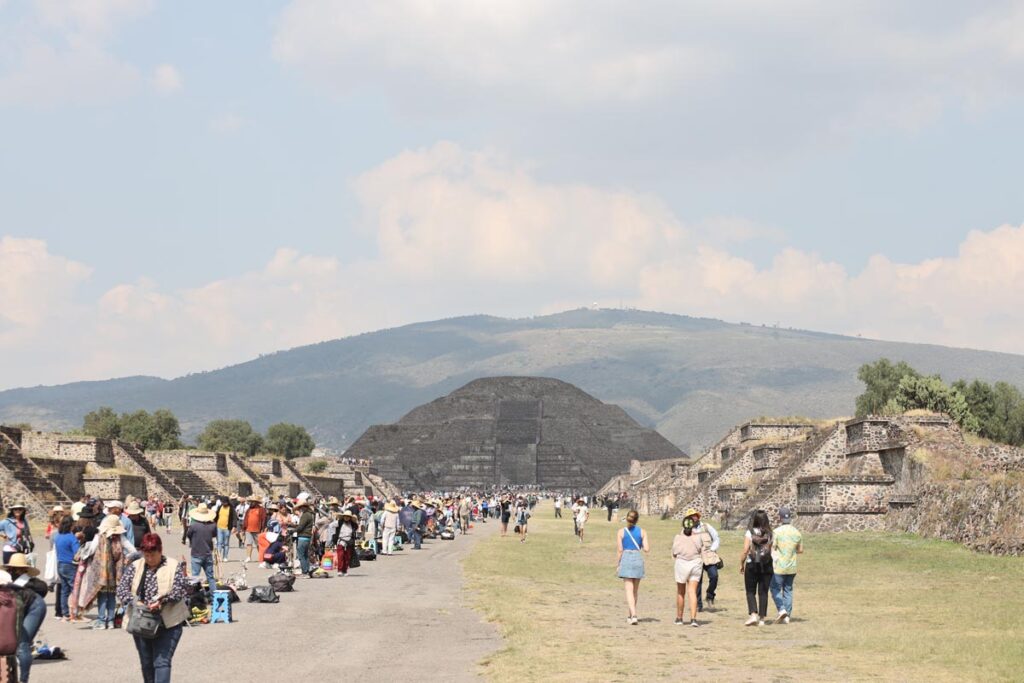
The Temple of the Feathered Serpent
The Temple of the Feathered Serpent is a smaller but equally impressive structure in Teotihuacan. It is located at the southern end of the Avenue of the Dead and was built in the 3rd century CE.
The temple gets its name from the many depictions of feathered serpents that adorn its façade. These carvings, made of obsidian, jade, and other precious materials, depict the serpent deity Quetzalcoatl, who was believed to have been born in the city of Teotihuacan.
The temple consists of a series of platforms and terraces, which are decorated with elaborate reliefs and sculptures. The façade of the temple is adorned with hundreds of carved stone serpents, which wind their way around the structure, creating a stunning visual effect.
The temple also contains several important tombs, which were likely used for high-ranking members of Teotihuacan society. The tombs contain many precious artifacts, including jade and obsidian jewelry, pottery, and other items.

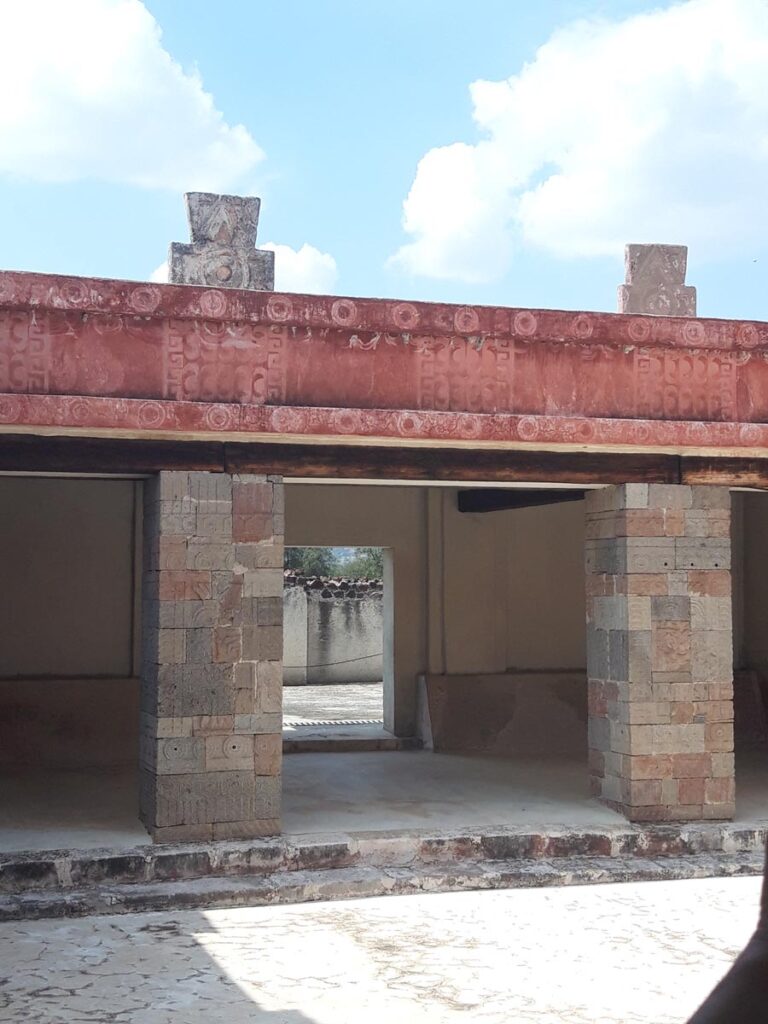
Experience the ruins of Teotihuacan from a hot air ballon
For an even more memorable experience, consider booking a balloon flight over the Teotihuacán Valley to admire the pyramids from above.
We booked our tour with Skyballonmx and highly recommend them. Our full-day trip included the balloon ride, pick-up service, entrance to the ruins, and several other activities.
Teotihuacan daytrip itinerary:
04:30 a.m. | Meeting at Ángel de la Independencia (Paseo de la Reforma, MXC) |
05:45 a.m. | Check in and coffee break |
06:00 a.m. | Hot air balloon flight (approx. 1 hour, depending on weather conditions) |
08:00 a.m. | Breakfast |
09:15 a.m. | Visit to the craft workshop |
09:45 a.m. | Transfer to archaeological zone |
10:00 a.m. | Visit the archaeological zone and pyramids |
12:00 p.m. | Return to CDMX |
Due to thermodynamic conditions, the balloon can only fly in the morning. The company we joined usually offers two rides: one early for sunrise and a later one. Unfortunately, we joined the second flight, which starts later. Due to this and some other delays, we only arrived at the archaeological site around 12 p.m., when it was already quite crowded.
Therefore, I would suggest booking the first flight at sunrise when planning your trip with SkyBalloonMX. Aside from that, we were happy with their service and would recommend them. You also receive a certificate and have the chance to buy a drone video of your flight for about $18.
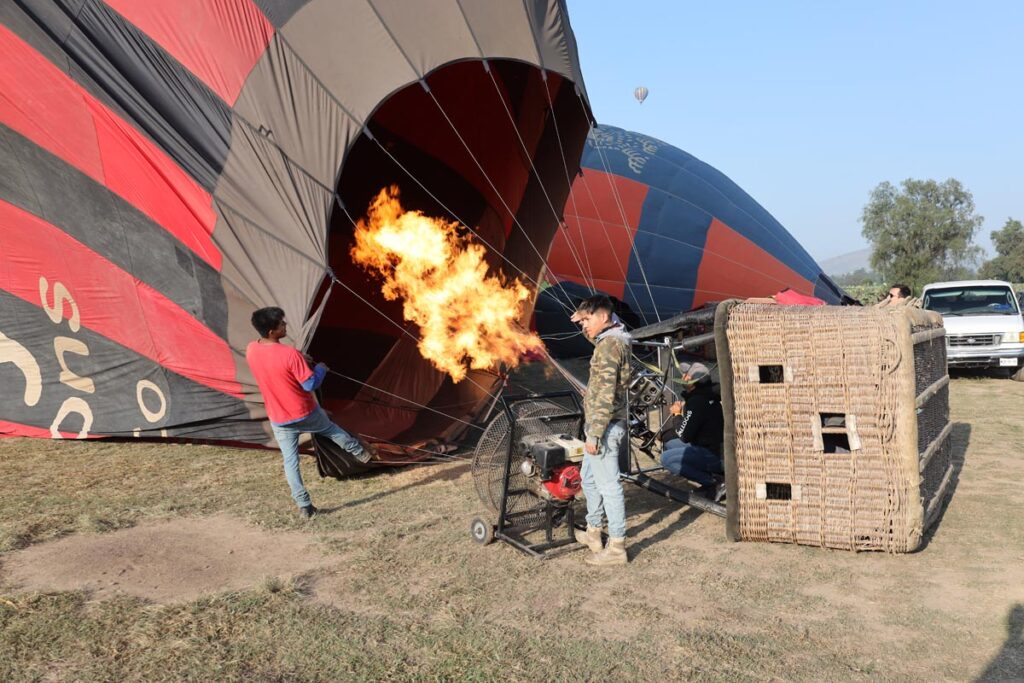
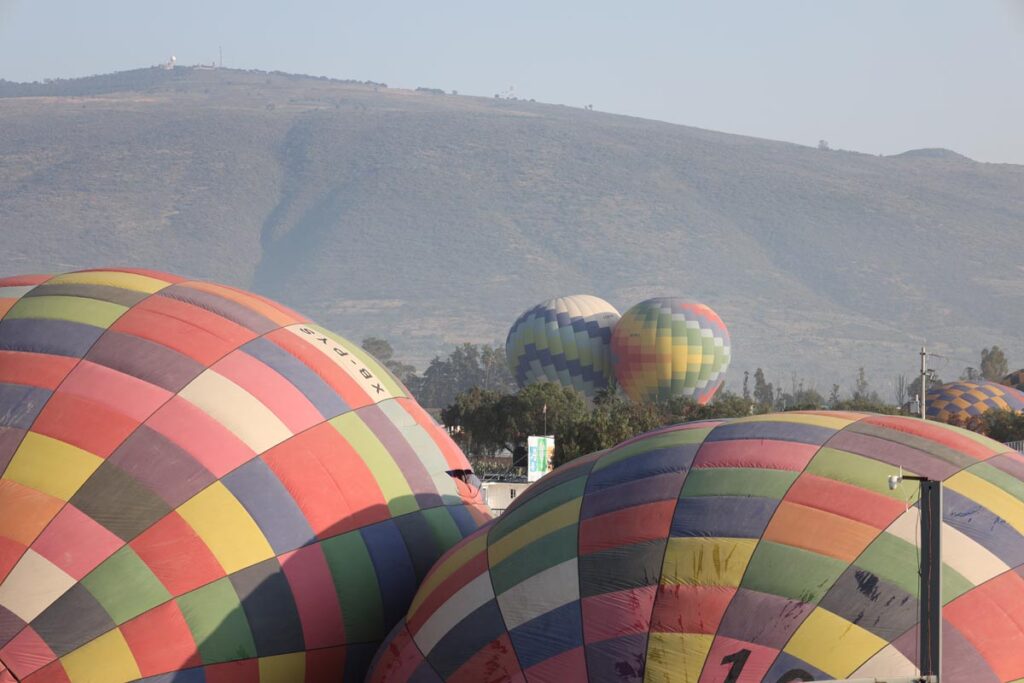
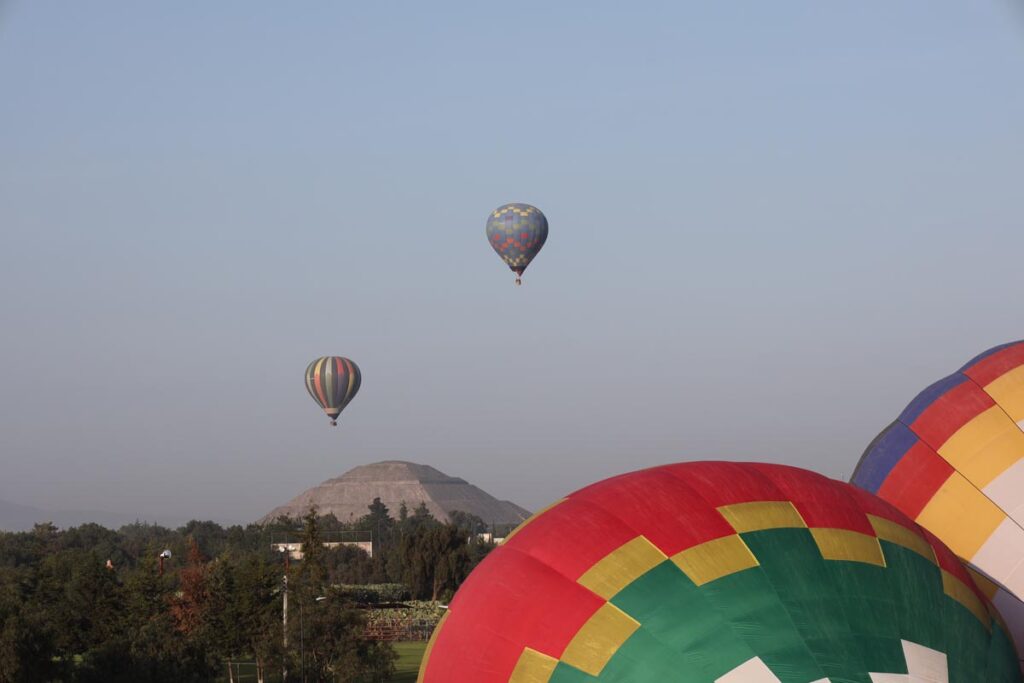
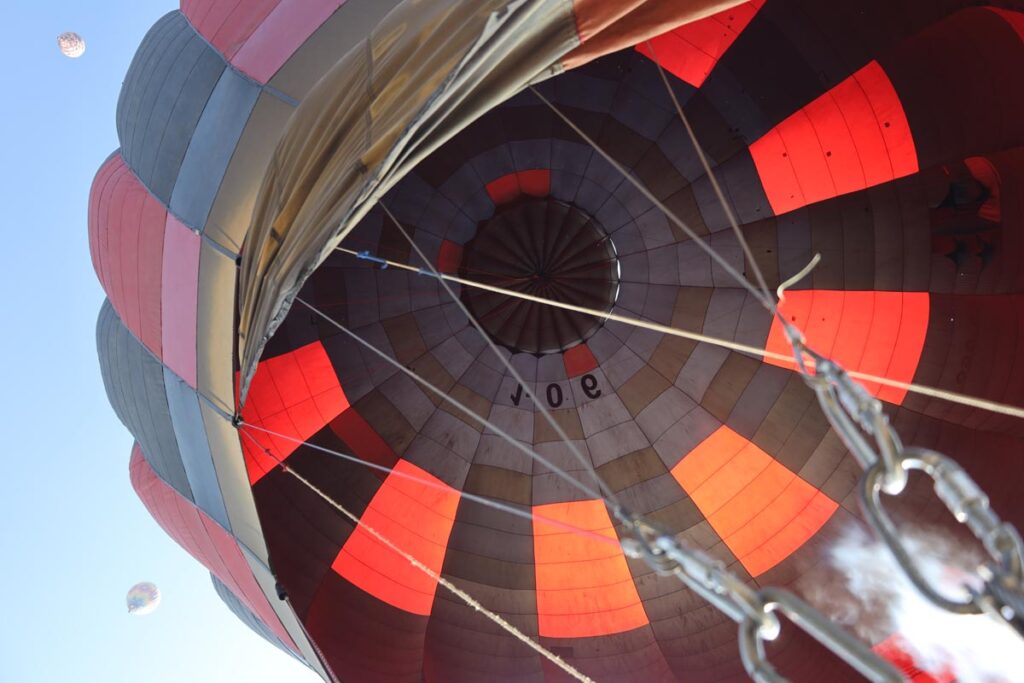
The proximity to the ruins during the balloon ride will depend on weather and wind conditions. However, the surrounding landscape with the mountains and dozens of other balloons is worth seeing and contributes to this once-in-a-lifetime experience!


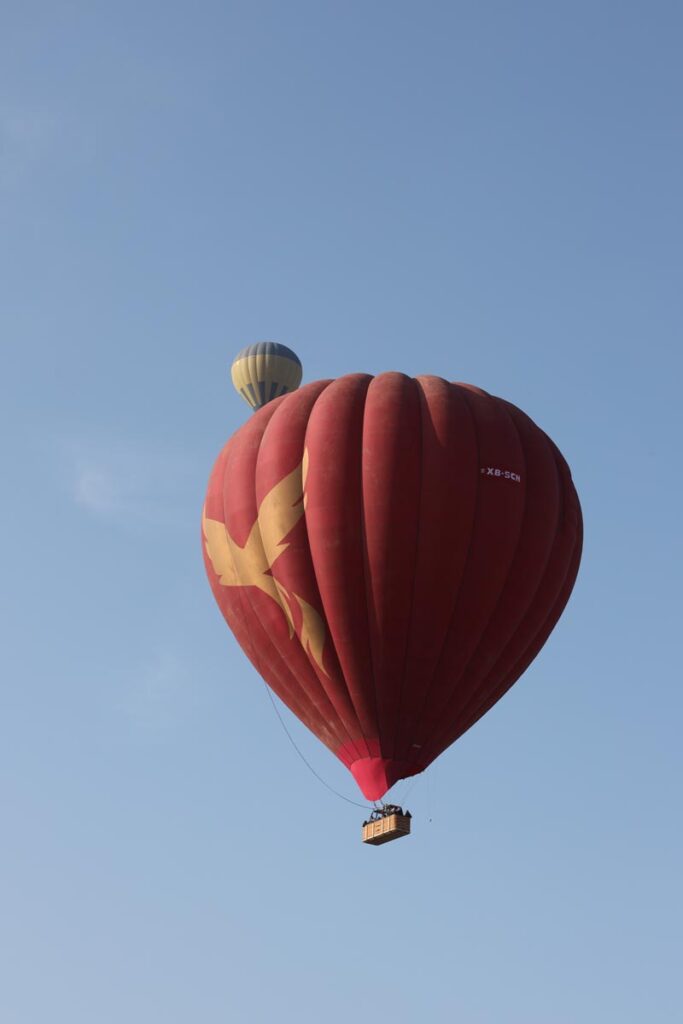
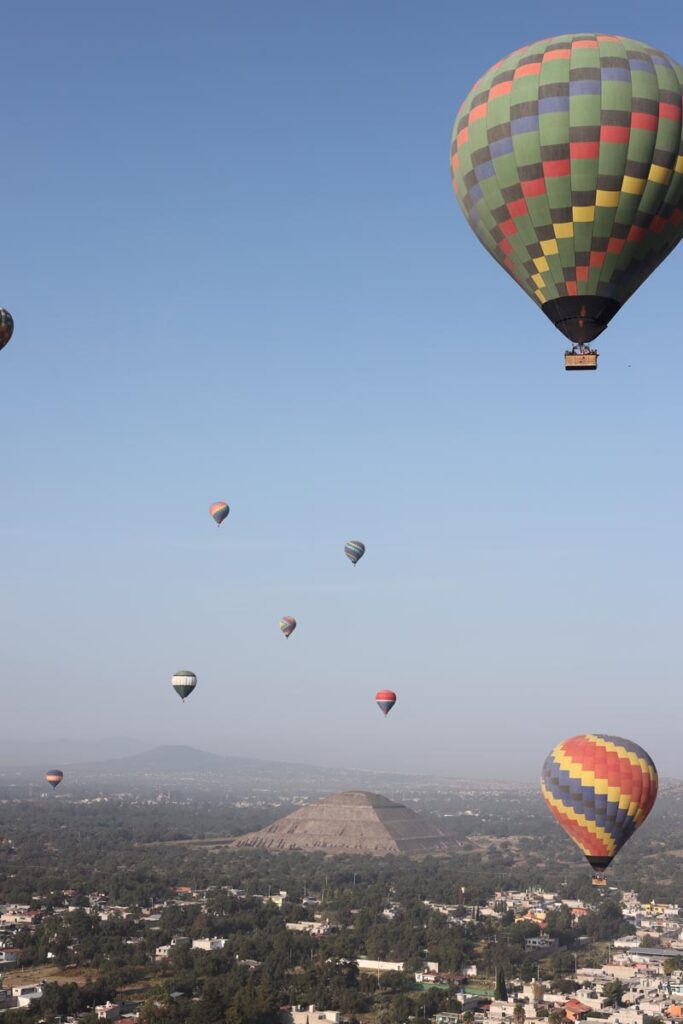
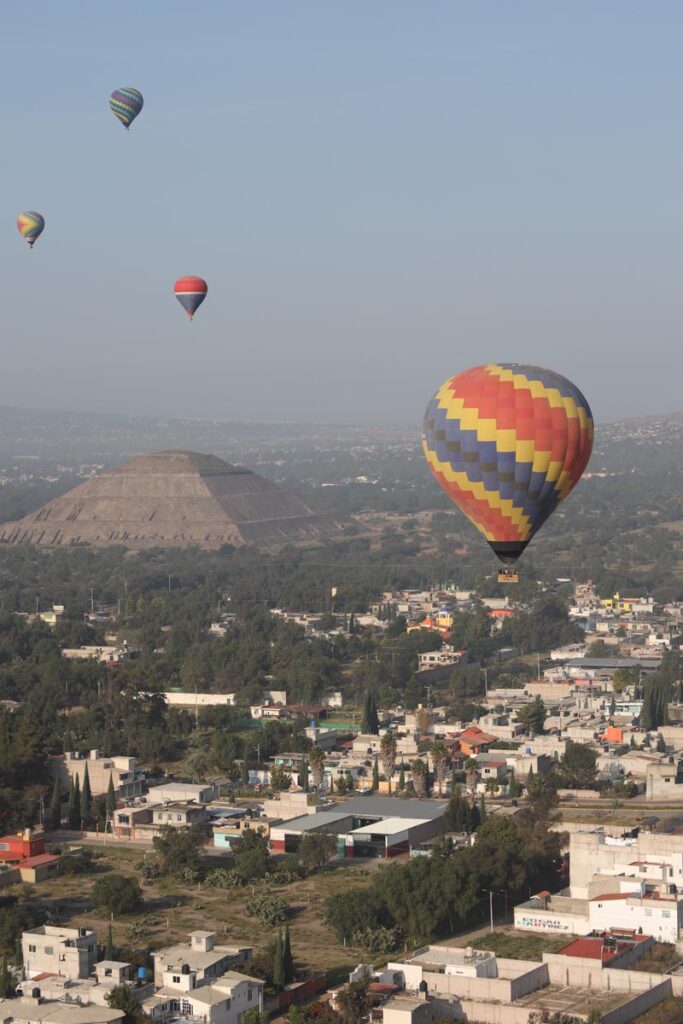
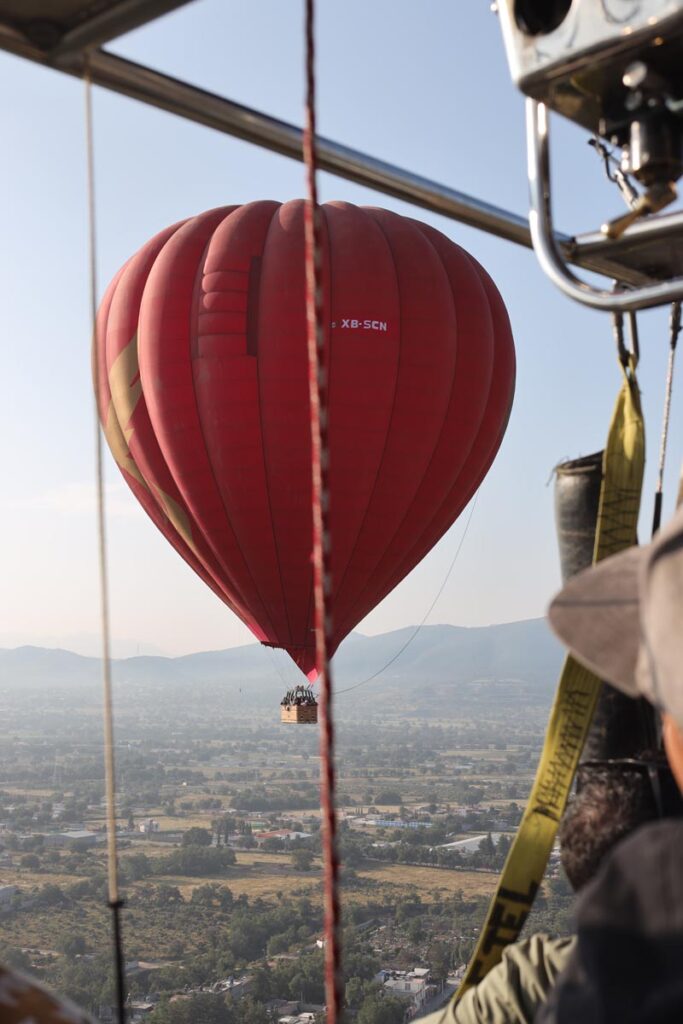
In the south of Mexico City, you will find a vast area crisscrossed by approximately 150 km of canals initially built as a watering system by the Aztecs in the 14th century. This area showcases the last remnants of the lake “Texcoco” on which MXC was built.
In the past, the “Floating Gardens” provided food for local inhabitants. Nowadays, visitors can explore the canals by colorful and uniquely decorated gondolas, or Trajineras, as they are called here. It is no coincidence that this part of MXC is also referred to as the “Venice of Mexico City.”
During the weekends, this place becomes the go-to destination for partying. People visit Xochimilco, bring alcohol, snacks, and music, and party together in groups while riding the Trajineras.
Less than 100 km away from Mexico City, you will find two volcanoes – Popocatépetl and Itzaccihuatl. Popocatépetl is currently an active stratovolcano, while Itzaccihuatl is dormant. There are different hiking possibilities for Itzaccihuatl, and there are other natural sights to see at the adjacent national park.
If you have more time available, you can plan a weekend or multiple-day trip and combine the visit to the volcanoes with a stay in Puebla. If you have limited time, you can book a day trip from MXC. You can find several tour providers online.